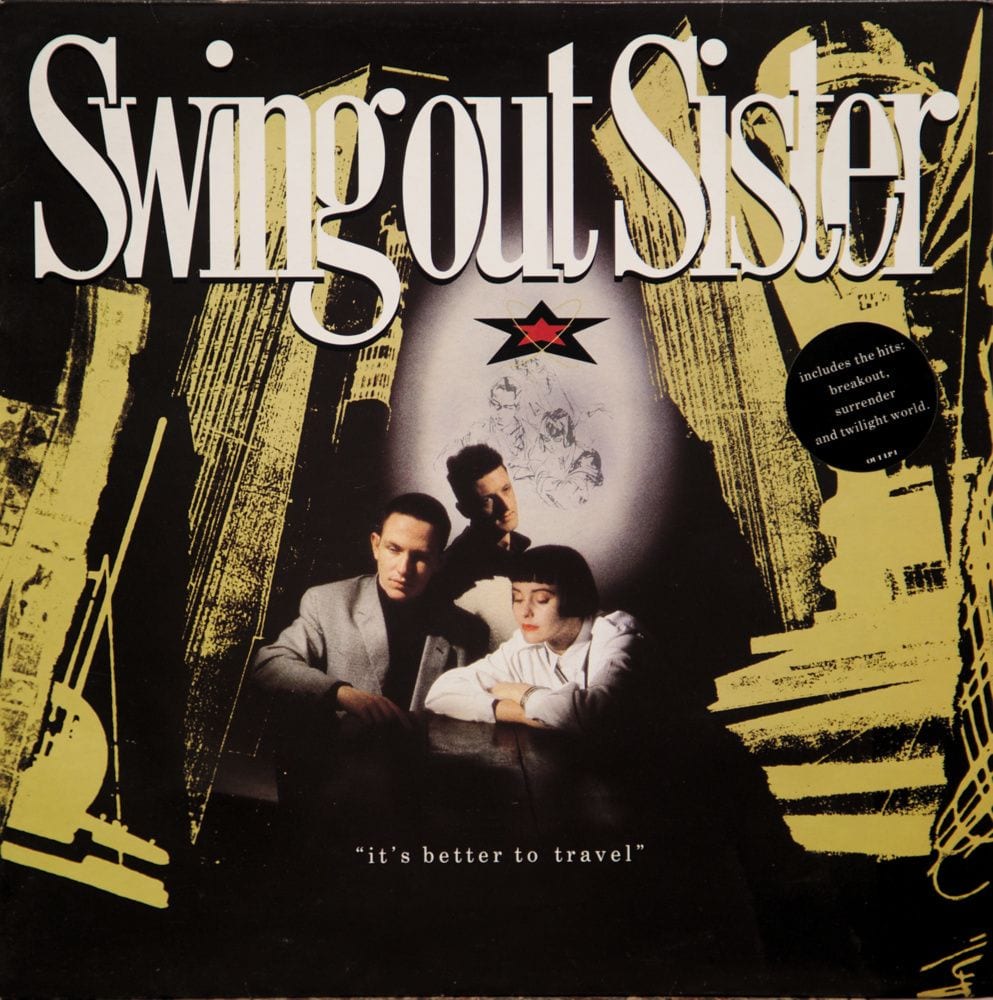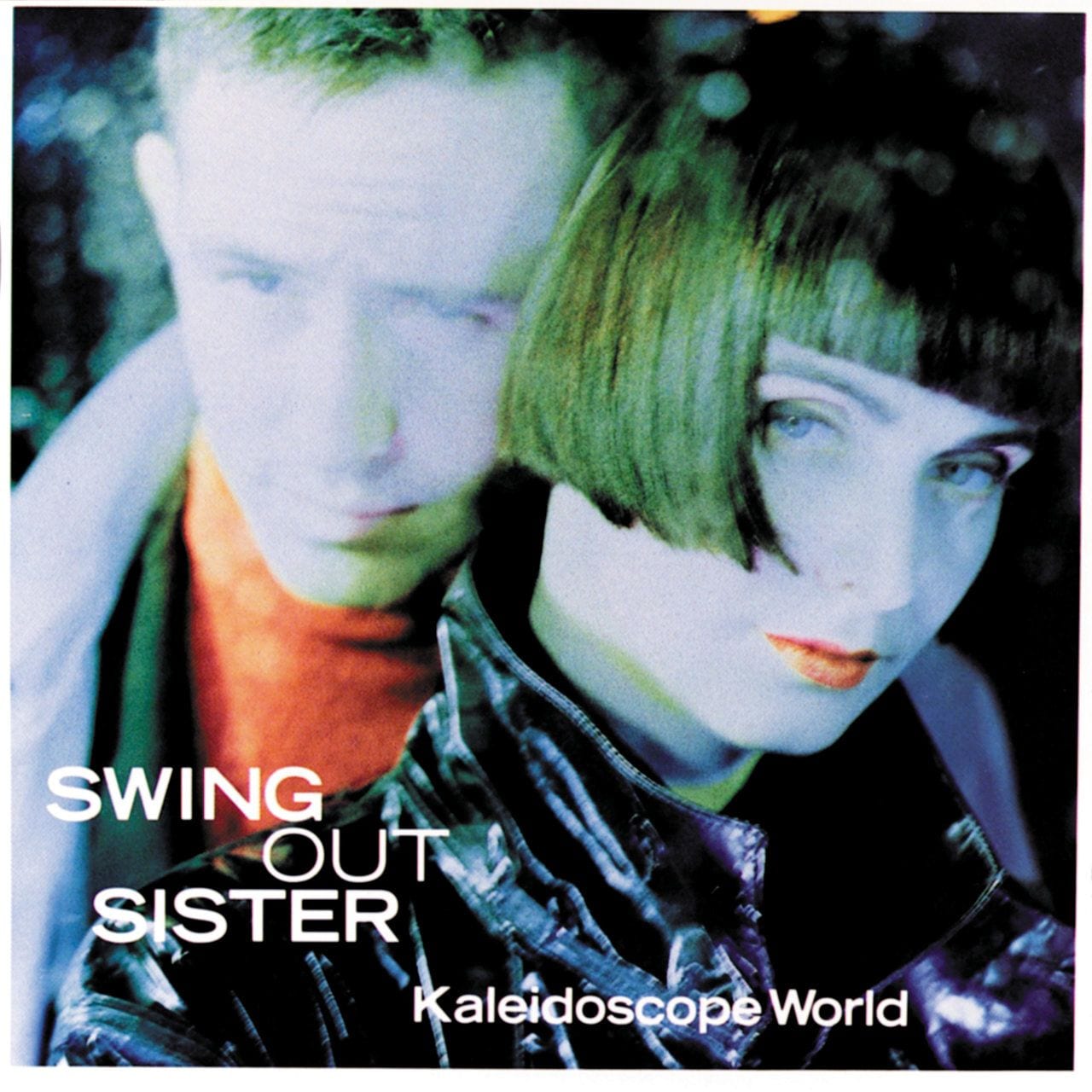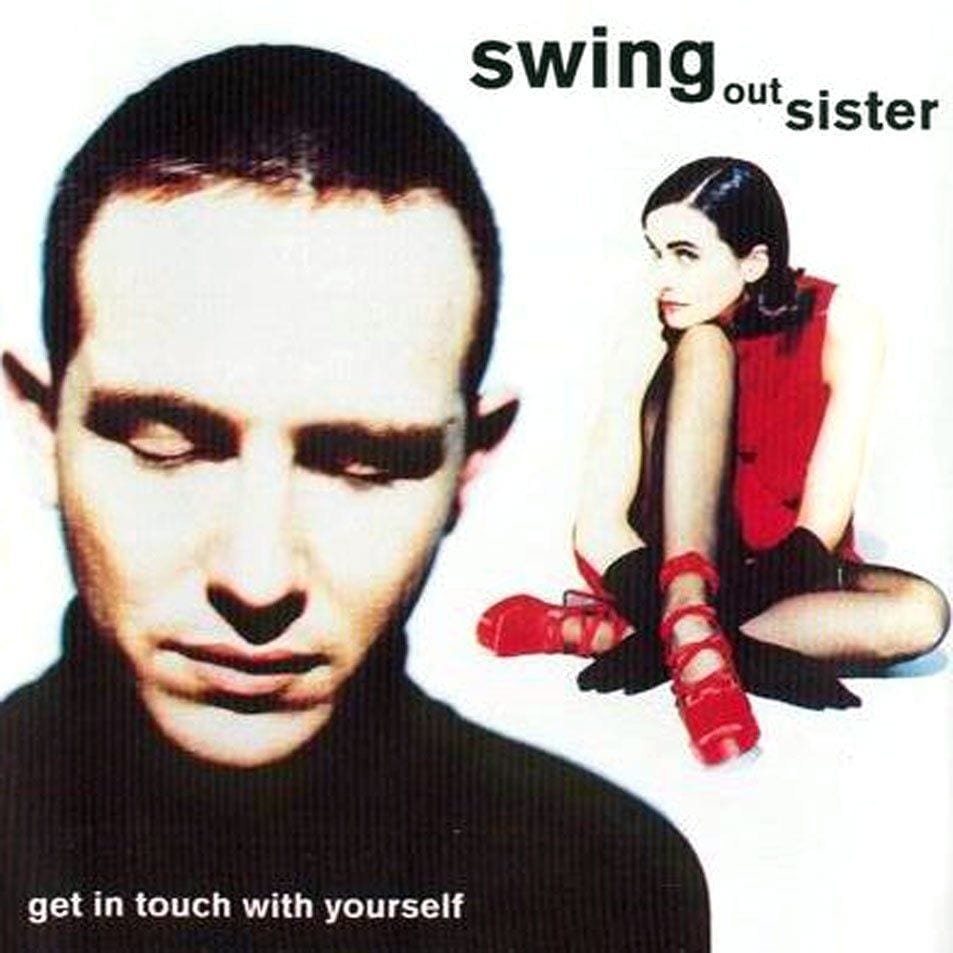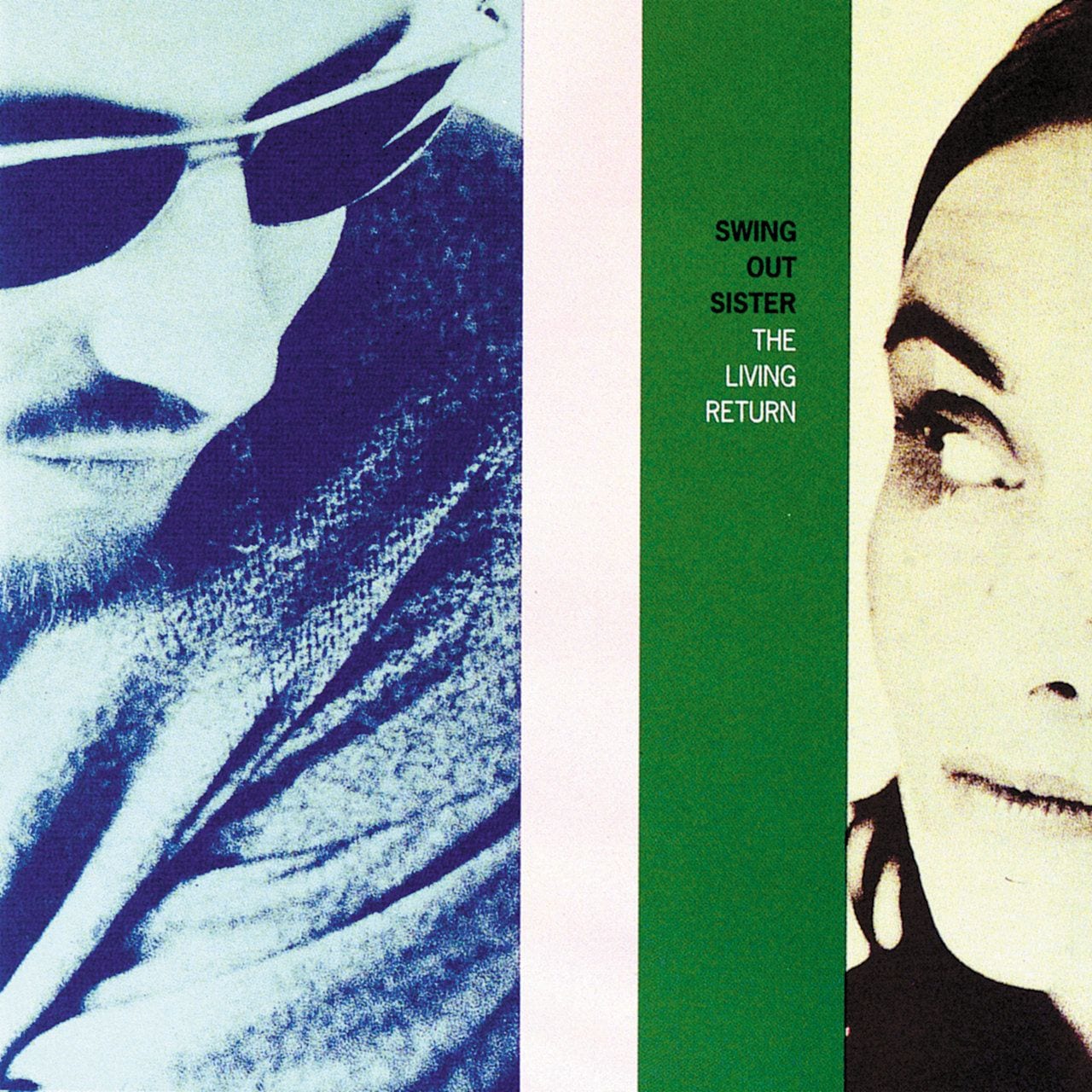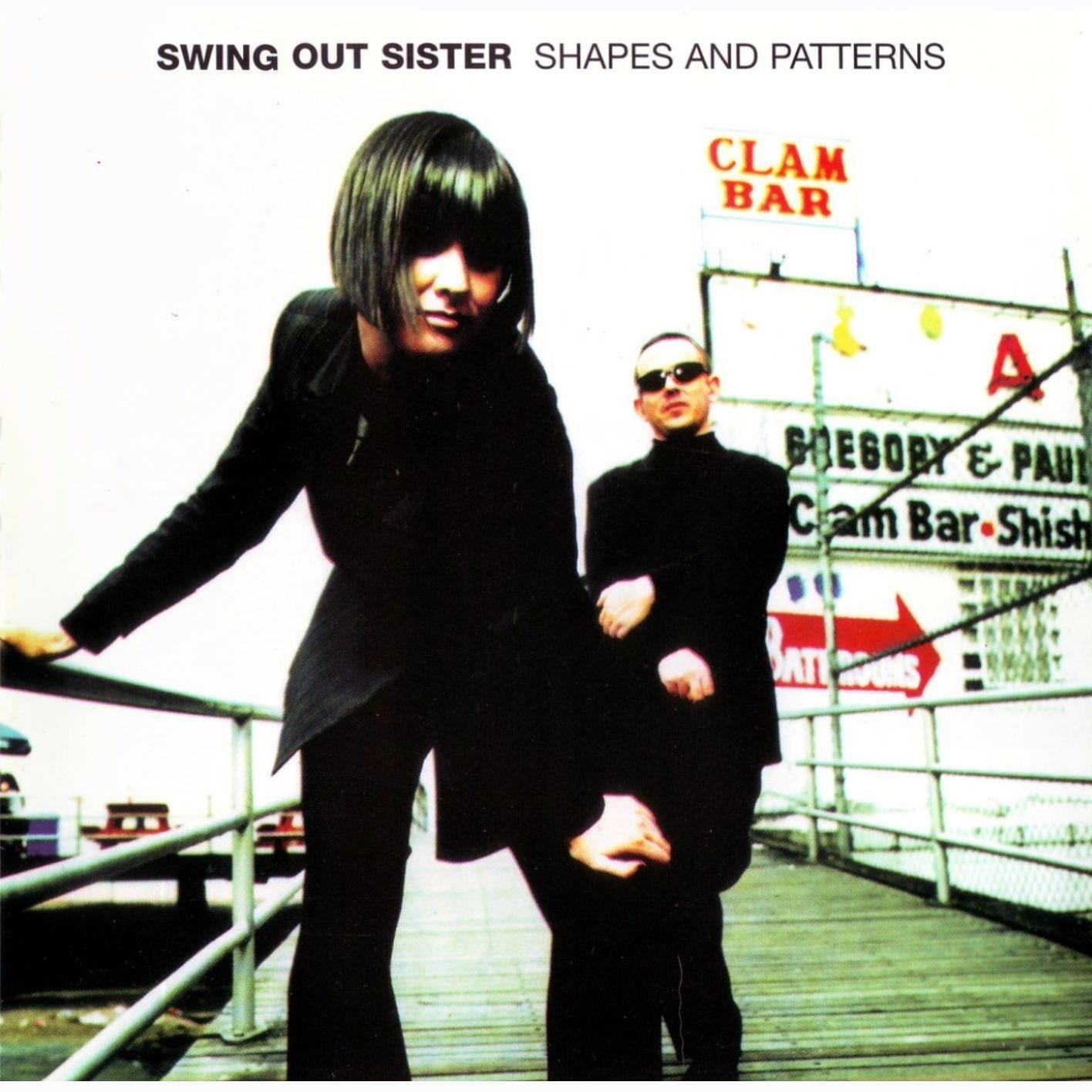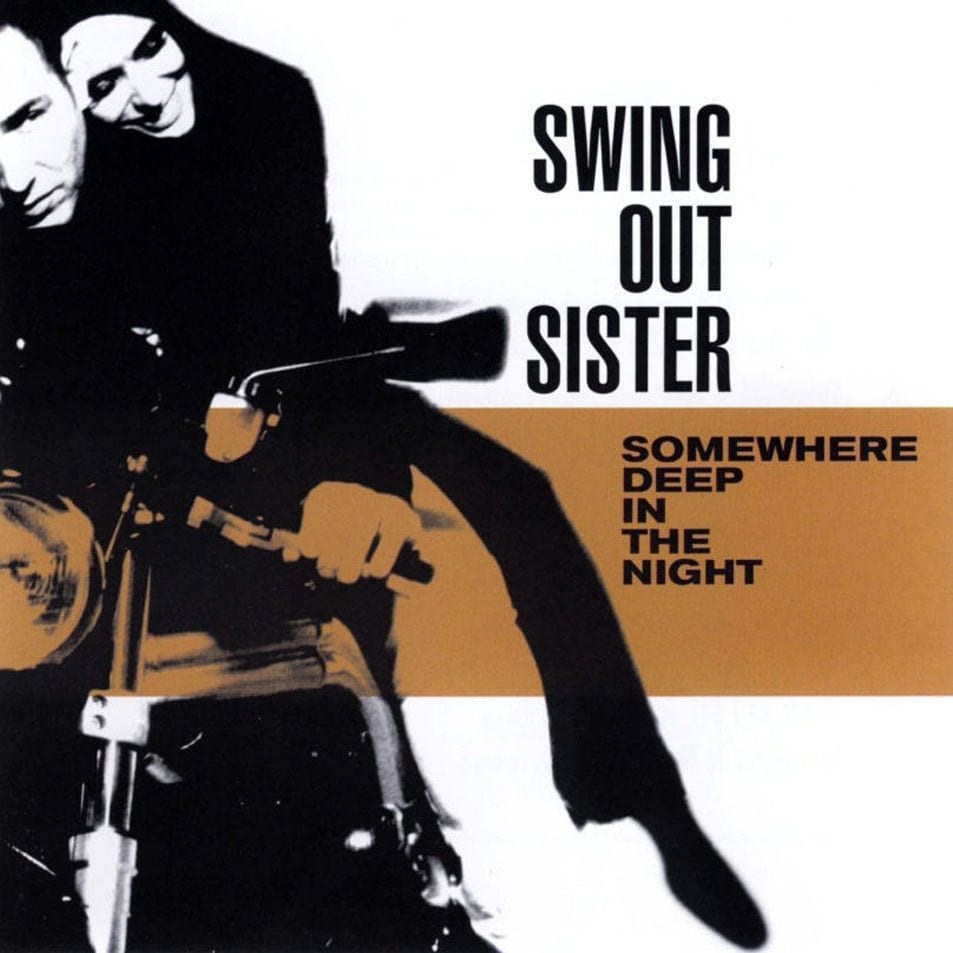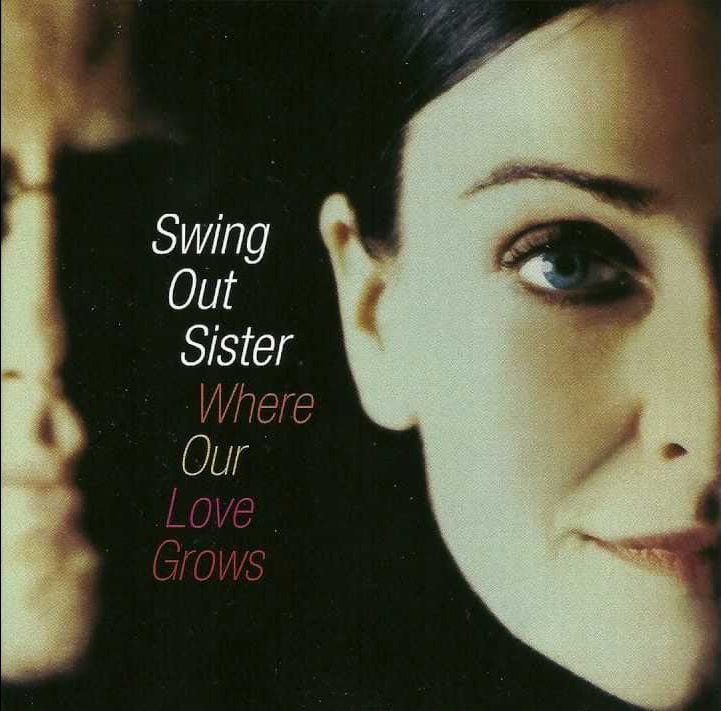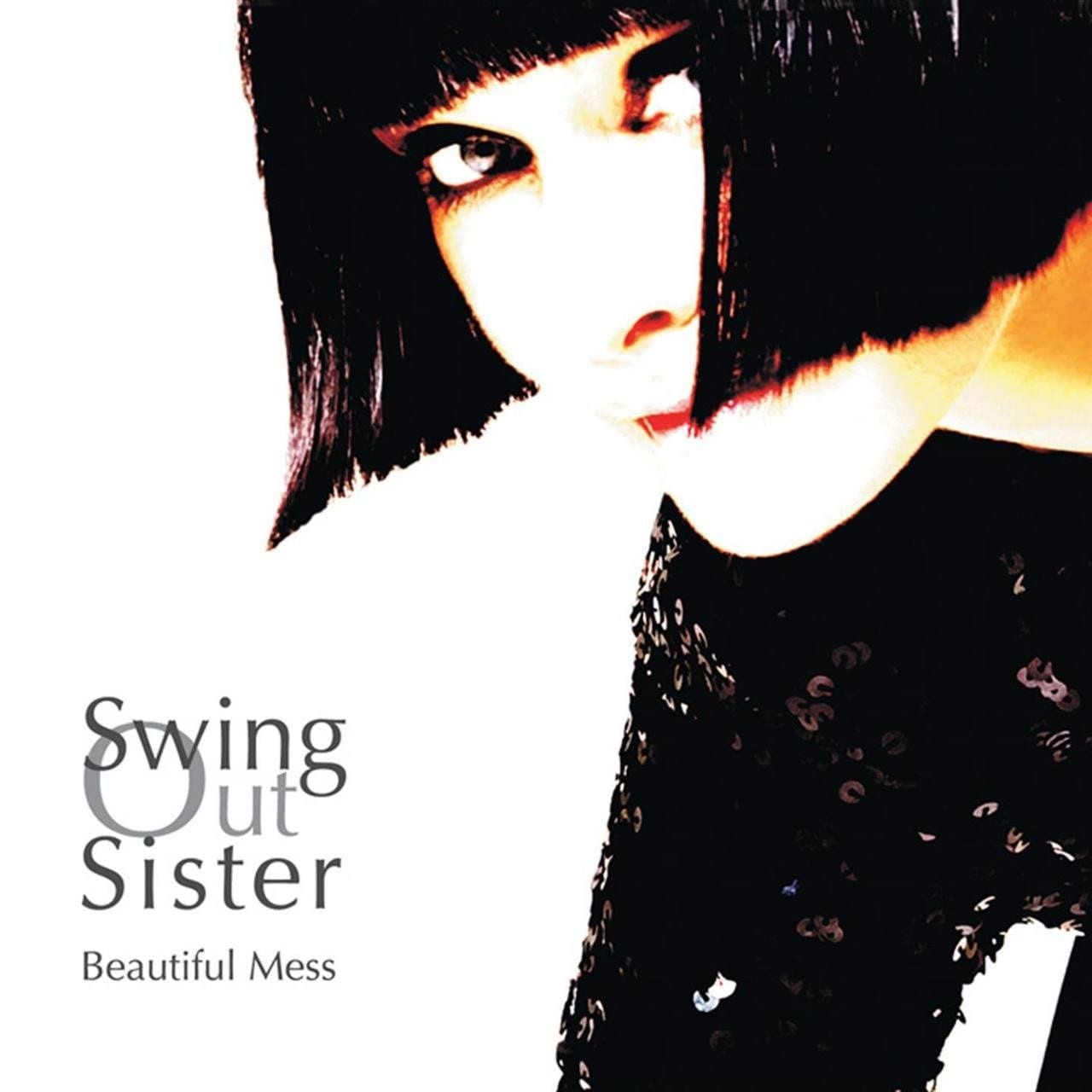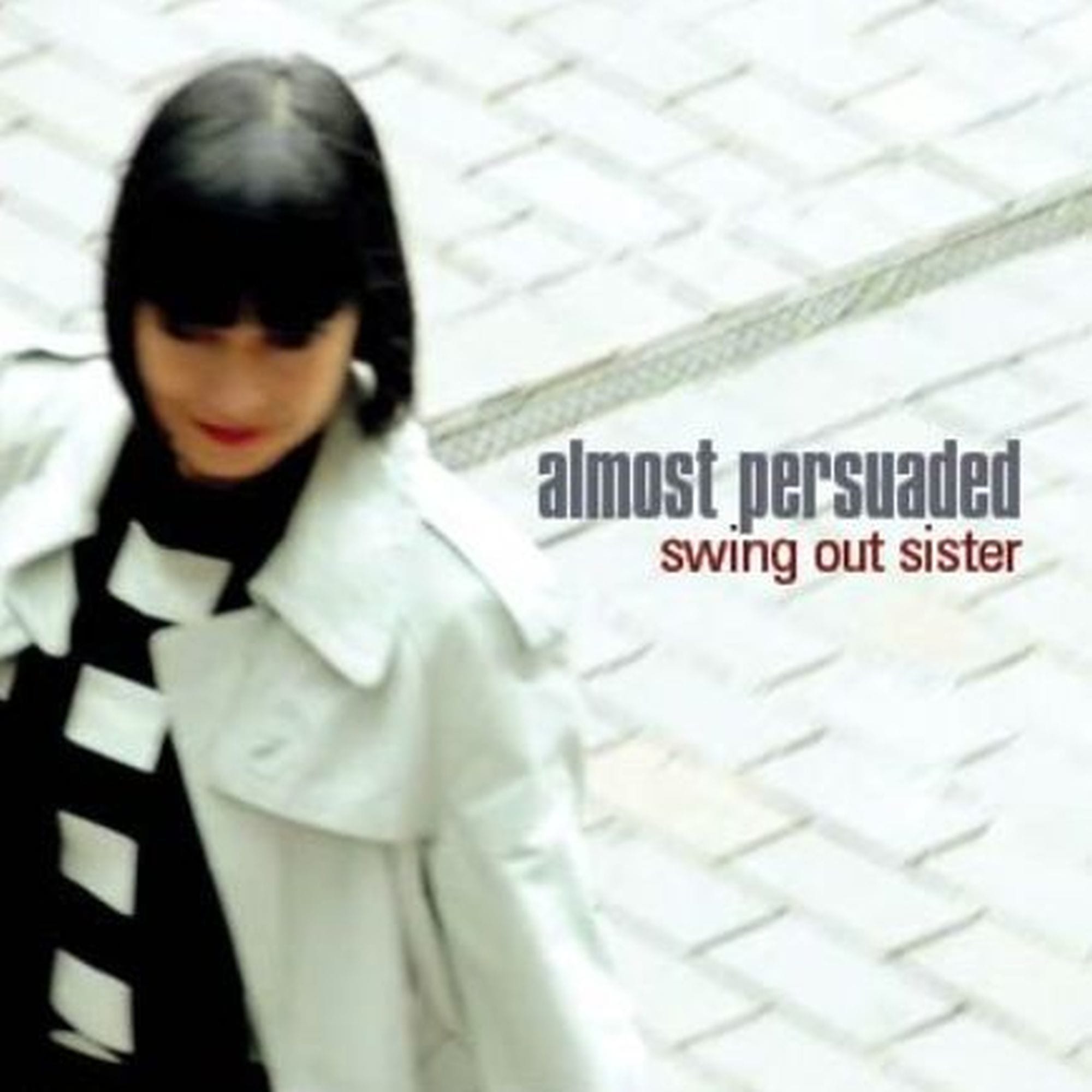When Swing Out Sister unveiled their latest release, Almost Persuaded, a month ago, it brought them up to the round number of ten (not counting special projects and live releases). Their story began over 30 years ago, with the album It’s Better to Travel (Mercury, 1987). But, as Corinne Drewery’s appearance on ITV’s Loose Women in 2008, promoting Almost Persuaded‘s predecessor, Beautiful Mess, indicated, a lot of people don’t realize that musicians are still active unless they’re constantly in the singles charts. Among the barely researched questions was one gem from Sherrie Hewson: “When you made your first video, was that a different time?” Then, in an awkward exchange that Corinne handled with customary good grace, TV vocal coach Zoe Tyler chirped, “I was 16 you when your song was a hit. What have you been doing since that time? Did you have a break? Did you think, ‘I want it back! I want to get back to where I was’?”
The insinuation that Swing Out Sister were on some sort of delusional comeback trail after years of inactivity was an indication of the way daytime TV understands the music world – in clichés and brash, broad strokes that don’t necessarily tally with reality. As anyone whose cultural reference points aren’t confined to Radio 1 could have pointed out, Swing Out Sister have been a remarkably durable, successful and prolific unit. Thanks to the international reach of their fan base, when they stopped having domestic hit singles in Britain, it did nothing to dent their popularity as both live performers and album makers. Over the course of three decades, they’ve made increasingly fine-spun music that brushes up against soul, jazz, lounge, exotica, film-soundtrack music, and sunshine pop. Corinne’s smooth, elegant vocals are still the perfect complement to Andy Connell’s elaborate, electronic-orchestral soundscapes. As the duo prepares for a rare London performance, there could no time as good as now to look back at their work via an album-by-album guide with Corinne our chaperone:
It’s Better to Travel (1987)
After testing the waters with a single (“Blue Mood”) that performed modestly on the UK charts, Swing Out Sister, at this point a three-piece (Corinne – vocals, Andy Connell – keyboards, Martin Jackson – percussion), took off globally with “Breakout”, their irresistible calling-card of a song. Its uplifting, empowering message, wrapped in the best kind of 1986 sophisti-pop apparel, mixing synths with traditional instrumentation, made it a global smash, and their debut spawned an additional three hits. Rather than coming to the music industry with a master-plan, the threesome had formed thanks to a mix of chance and serendipity:
“To be honest, it was a succession of fortunate accidents… literally! I fractured my skull in a riding accident and decided I wanted to change my direction in life. Music had always been a great love, and when I met Andy and Martin at the Haçienda in Manchester, it turned out they were looking for a singer. They had previously been in the bands A Certain Ratio and Magazine. I came from St Martin’s School of Art and had a fashion design background. At first, our only common ground was a love of the Bond themes by John Barry, especially those featuring Shirley Bassey, so we set out to create one as far as I was concerned. We were elated every time we finished a song. Our collaboration with producer Paul Staveley O’Duffy began when Phonogram signed us. He also shared a love for the music of John Barry and was as keen as we were to achieve a cinematic sound”.
Kaleidoscope World (1989)
Emboldened by success, Swing Out Sister (now slimmed down to a two-piece following Martin Jackson’s departure) pulled out all the stops for a fully orchestrated album that went even deeper into retro cinema and Bond-theme motifs than the debut. It was more challenging, but also more rewarding, as it was characterized by sweeping grandeur, unabashed glamour, high romance, and luscious intrigue. Perhaps as a consequence, its songs didn’t succeed as singles quite as consistently as those on the first album, with only “You on My Mind” rupturing the UK Top 40. Regardless of that, it remains an artistic peak. Perhaps it ingratiates itself more slowly than It’s Better to Travel, but once it’s made your acquaintance, Kaleidoscope World‘s friendship is richer and more prolonged.
“We were so stubborn – as house music came into full swing, we decided to return to the golden era of songwriting, complete with orchestral arrangements and vocal harmonies. All we wanted to do was write timeless classics as the Brill Building writers had done in the 1960s. The work Jimmy Webb had done with the 5th Dimension (Webb produced two albums for the 5th Dimension – The Magic Garden and Earthbound) inspired us to ask him if he would do arrangements on a couple of our songs… what a cheek! But he accepted. I remember him being surprised that I made him a cup of tea. I suppose Streisand and Sinatra had never done that.”
Get in Touch With Yourself (1991)
Swing Out Sister bade a temporary farewell to the luxury movie music of their earlier work. In contrast to the film noir/spy movie hues of their second album, they went all-out technicolor on a jubilant third LP that had an unmistakable Northern Soul influence. Their effervescent cover of Barbara Acklin’s “Am I The Same Girl” (also notable for its 1969 cover by Dusty Springfield) bagged them a sizeable hit and the accompanying video revealed Corinne’s new look; long hair and colorful, Carmen Miranda apparel.
“I have always loved Northern Soul. Andy and I were at a club in Manchester that used to be the Twisted Wheel where the Northern scene began, and the DJ played “Am I the Same Girl”. Andy and I both thought it would be great to write a song like that, so we thought why not just do our version? Along with Curtis Mayfield and Isaac Hayes, this song inspired a lot of the feel of the album. We took a slightly more R&B, groove-oriented approach to the songs – we had veered so far away from the dance and house influences with our previous album – but instead incorporated more jazz and funk rhythms. We did make one concession – Frankie Knuckles remixed “Notgonnachange” and created a masterful club mix exposing the soaring Will Malone string arrangement.”
The Living Return (1994)
Although it marked the first time that an Swing Out Sister album hadn’t made the UK album charts, The Living Return was a critical success, with glowing appraisals in NME and Q. Its cover of the Delfonics’ “La La (Means I Love You)” was featured on the Four Weddings and a Funeral soundtrack, one of the year’s bestsellers, and nudged its way into the lower reaches of the Top 40. Sounding like something that could have come from Leroy Hutson’s Closer to the Source album (1978), “Mama Didn’t Raise No Fool” revealed Corinne and Andy’s growing facility for writing expert homages to 1970s soul music, and was featured widely on American cable television.
“We had been touring extensively and wanted to feature the sound we had developed with our live band. We worked with producer Ray Hayden on this album and rehearsed the songs as if for a tour before we recorded them to capture more of a live atmosphere. We purposely left in some rough edges. Juneroy and Myke Wilson on bass and drums have been our featured rhythm section on many tours, along with Tim Cansfield on guitar, forming an integral part of our live sound. We also recorded our Live at The Jazz Café album with the same band. “Mama Didn’t Raise No Fool” came out of another song that didn’t sound finished… so we rewrote it in the studio while the band were waiting to record it – sometimes good things can come out of a mad panic!”
Shapes and Patterns (1997)
Where The Living Return bore traces of Weather Report and Miles Davis, Shapes and Patterns, which reunited Swing Out Sister with long-standing producer and co-writer Paul Staveley O’Duffy, saw them once more embracing flavours of the 5th Dimension and their less-staid (but also less successful) peers, Rotary Connection. While its predecessor featured just a small brass and woodwind section, Shapes and Patterns benefitted from an orchestra. The album had a staggered release, reaching the UK and Europe a year later than Japan.
“This album was commissioned by Phonogram USA who originally wanted us to work with an American producer. We tried a couple of songs with En Vogue producers Foster/McElroy in their San Francisco studio, which was great but didn’t feel quite like recording in the UK on familiar ground. Paul Stavely O’Duffy’s production had become an integral part of our sound. He produced and also co-wrote several songs on Shapes and Patterns. Frank Campbell added celestial vocal arrangements for “Always”. “Somewhere in the World” was originally going to be a duet with Philip Bailey. The vocal arrangements featured on the 5th Dimension’s version of “Stoned Soul Picnic” made this a perfect song to include on the album. We love the songs of Laura Nyro, who passed away before we had released the album, so this became a fitting tribute. “Now You’re Not Here” was a theme tune written for a Japanese RV series, for which we earned a Grand Prix Award (a Japanese Grammy equivalent).”
Filth and Dreams (1999)
You’d have been forgiven for thinking that this was when Swing Out Sister took a sabbatical. Filth and Dreams remains their only album without an official European, British or American release (it did get a belated independent, limited edition release in the UK in 2012). In fact, it only came out in Japan. Sometimes, Japan-only releases by hitherto international acts are disappointing, shoe-string budget affairs, but Filth and Dreams is as credible an entry in the Swing Out Sister catalog as any of their works. It’s still fairly easy to acquire and well worth the trouble. By this time, the group were midway through a run of Japanese hit singles and the opening track of Filth and Dreams, the neo-soul “Who’s Been Sleeping”, was a #2 and set the tone for an understated, jazzy album made with a slimline ensemble of Andy, Corinne and backing vocalist/guitarist Tim Cansfield.
“We had been signed to Mercury USA prior to this, but Filth and Dreams was only released by Universal Japan. We moved away from our lush, cinematic sound towards a more earthy feel, and lyrically this album was a bit darker, which didn’t appeal to everyone. We were influenced by the Brazilian sound of people such as Elis Regina Azymuth, Airto [Moreira] and Flora Purim and the songs of [Carlos] Jobim. Again, we worked with Paul Staveley O’Duffy, but this album was much more minimalistic – a departure from his usual production style. I believe this was the first album to feature backing vocals by Paul and Andy as well as myself.”
Somewhere Deep in the Night (2001)
Without a doubt a creative victory for the duo, their seventh album was notable for its captivating film-music textures and adventurous melodies that made the most of Corinne’s voice, wrapped around songs of thwarted love and wistful yearning. Of all their albums, perhaps Somewhere Deep in the Night is the most tellingly Swing Out Sister – shimmering, romantic and full of dazzling sound-sculptures by Andy. “Through the Sky”, in particular, recalls the work of Charles Stepney, one of America’s greatest soul arrangers, whose work with Minnie Riperton/Rotary Connection on Come to My Garden and Hey Love clearly inspired Swing Out Sister.
Touches of sax, trumpet, and flugelhorn provide titivating window dressing for each song, and clever programming gives the impression of a full orchestra. Trivia fans will note that 1970s hitmaker, Stephanie De Sykes, appears on backing vocals along with Dee Lewis, younger sister of folk-soul legend, Linda (the previous year, Swing Out Sister had guested on the elder Lewis’s Kiss of Life LP). Somewhere Deep in the Night had a staggered release, presumably because of the inner machinations of the music industry and the fact that, rather than having a 360-degree-type record deal, Swing Out Sister licensed their work to different companies in different territories. It arrived on American, European and British shores a year after its debut in Japan.
“As with all our albums, we didn’t start out with a plan. With Somewhere Deep in the Night, we just embarked on an adventure in sound. This was the first of our albums to be recorded in our own studio which allowed us more time for experimentation as there were no time restrictions. As we dug deeper, Somewhere Deep in the Night became something of a voyage of self-discovery for Andy, Paul and myself. We wrote all of the songs together, so the production and writing happened more or less at the same time. Andy and Paul wrote and also sang a lot of the vocal arrangements, and also recruited Tim Cansfield to sing as well as play the guitar. There are recurring themes throughout, and the arrangements give this album a more cinematic feel. I suppose there was a turning point – you could say this album was our Pet Sounds. We were so engrossed in the studio; we completely lost ourselves in the music. We had spent some time in France, and there is a hint of Francis Lai and Michel Legrand. We concluded the album in the French Alps; imagine the awe of the elements on a mountaintop, under a full moon surrounded by nothing but stars and sky.”
Where Our Love Grows (2004)
If Somewhere Deep in the Night drew on the incidental music used in films, then its follow-up was more about the big, catchy numbers that play out during opening and closing credits. The final major label offering from the group, Where Our Love Grows benefitted from a bigger marketing push than some of its predecessors. That still wasn’t enough to make the swelling, anthemic “Love Won’t Let You Down” the hit it deserved to be. The album represented a kind of halfway house between the hook-based pop songs of the band’s first album and their more experimental excursions into jazz and foreign-language cinema.
“Where Our Love Grows was like a continuation of Somewhere Deep in the Night but more song-orientated. We focused on more ballad-esque writing. It still has a cinematic feel but more like the main theme tunes. Imagine if “Love Won’t Let You Down” had become an anthem on the football terraces… I would have loved that even though I’m not a football fan! We continued to find new listeners in unusual places and were invited to attend a high school concert in Nottingham where “Let the Stars Shine” was on the music curriculum performed by the school orchestra. “When the Laughter is Over” became a popular slow dance theme for the Chicago Steppers in the USA.
Beautiful Mess (2008)
Few jazz vocal arrangements can achieve the exquisite beauty of that created by noted backing vocalist, Gina Foster, for “Something Every Day”, the rousing, cheerful opening track of Beautiful Mess. The song’s coda has all the butterfly grace of Minnie Riperton. The album itself is more in the soul/lounge than the film soundtrack vein. Some of the band’s most powerful R&B ballads, including “Time Tracks You Down”, add color and depth to an album characterized by slow, smooth, chill-out and cocktail party vibes.
“Beautiful Mess was the first album we produced ourselves. Andy changed the rules with the recording as he would rather be writing than producing, but in the ever-changing digital world, recording and writing increasingly happen simultaneously, a kind of record-as-you-go process.This gave the album a more intimate feel. We weren’t commissioned to do this by anyone and funded it ourselves, licensing it out to several labels in different parts of the world when we had completed it. Gina Foster wrote three of the songs, including “Something Every Day”, with Andy and myself. Gina also sang on and worked on the vocal arrangements, which are an integral part of this album. Beautiful Mess received much acclaim from the soul crowd, especially on the Northern Soul scene.”
Almost Persuaded (2018)
Their tenth album (preceded by a special project, Private View, in which the duo performed mainly back catalogue songs with their touring band) is a glorious sound-bath, with an emphasis on the marriage of soul and jazz that informed European and American film music soundtracks in the late 1960s and early 1970s. It has a laidback, summery air about it. Close your eyes as you listen and a panoramic sea view appears. The project began as a PledgeMusic campaign, Moveable Feast, that allowed fans constant glimpses of the album in progress. It’s apt, when you consider just how much Swing Out Sister music is inspired by cinema, that an embryonic version of the album, issued to pledgers in 2015 was called Rushes. Almost Persuaded came out to unanimously positive reviews, at least one of them noting how Corinne’s singing has developed in character and conviction.
“Almost Persuaded was another self-produced album. It may seem like it took us longer to make due to the ten-year gap, but the writing and recording of this album were interrupted by two tours, one of the USA and one of the Far East, and several festival appearances. Our first USA tour was canceled due to the Icelandic Volcano eruption, which halted all flights out of Europe. This prompted us to record the songs as we had rehearsed them for the tour and release them as Private View; we didn’t want to disappoint our American fans too much. We managed to reschedule the tour four years later. We also arranged and recorded an album of our songs with a big band – that was how Almost Persuaded started out. But as we had signed up to Pledge Music, we thought we should make it a brand new album. The recording process took longer because we made short films to accompany our work in progress, making the journey of this crowdfunding campaign as important as the finished album. As we said when we made our first album over 30 years ago, It’s Better to Travel. And we’re still traveling, ten albums later!”


